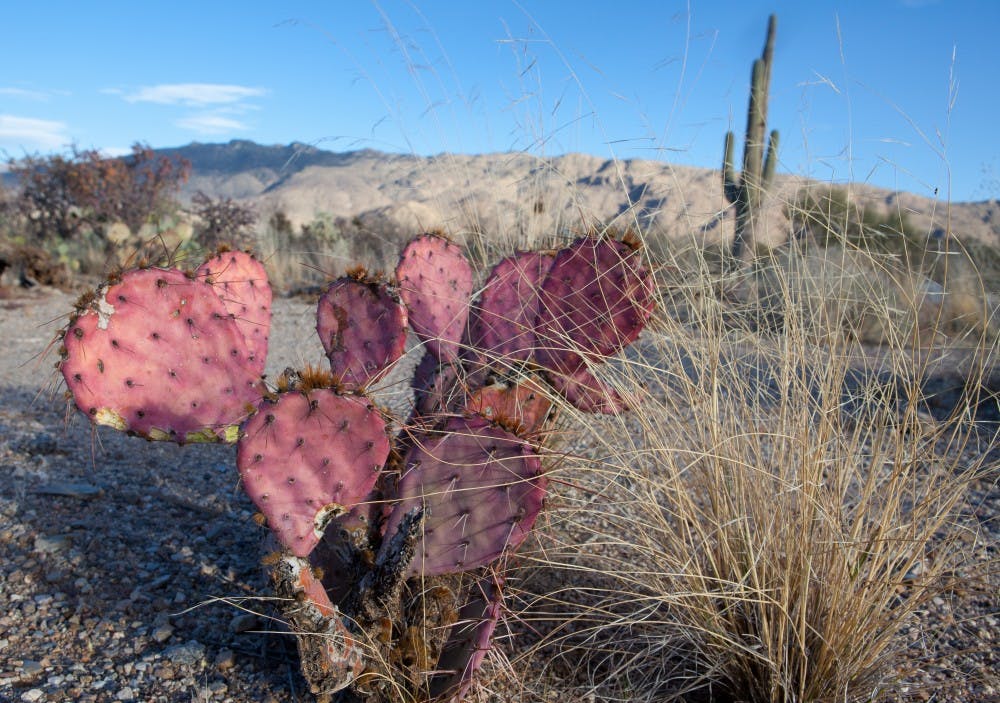Opinions in the U.S. are divided over the ethical and financial implications of the current administration’s proposed border wall. In lieu of statements made by President Donald Trump during the 2016 campaign and election cycle, Trump maintains the argument to place a barrier along the Mexico-U.S. border.
A wall of this scale would cover roughly 2,000 miles of southwestern dry terrain that extends along a line from the Pacific Ocean to the Gulf of Mexico. The goal of the wall, the president alleges, would be to decrease the number of immigrants who cross over the border illegally.
One department at MSU is taking interest in the impacts that a wall of that scale could have. Alan Arbogast, chairperson of the Department of Geography at MSU, spoke about his passion for geography, its applied uses and how his department is seeking to educate students.
“We are a very successful academic department that very few students know that much about,” Arbogast, whose work includes studies of the geographical evolution of the Great Lakes region, said.“Every year in November, geographers nationwide — we have something called Geography Awareness Week. Most disciplines don’t have an awareness week. ... The reason for that is, again, because geography is a discipline that’s very poorly understood. So we have our Geography Awareness Week, and here in the past five years, we’ve tried to promote the department visually on campus in a big way by hosting somebody who’s a prominent speaker.”
Over the years, multiple speakers have continued the tradition of showcasing what the department has to offer students.
“This year we’re bringing in Krista Schlyer, who is a conservation photographer,” Arbogast said. “She’s working in the Southwest. And she is looking at the borderlands area between the United States and Mexico.”
In tandem with MSU’s Geography Awareness Week, the department will be hosting Schlyer’s presentation on the hotly-contested idea of Trump’s aforementioned border wall. The slideshow presentation, entitled “Continental Divide: Wildlife, People and the Border Wall,” took place Wednesday, Nov. 8.
Schlyer will be discussing her research of intricate ecosystems that can be found along the Mexico-U.S. border. According to an event notice on the Department of Geography’s website, Schlyer’s presentation will “discuss the natural and human history of the borderlands; the history of border policy; the unthinkable human consequences of border militarization; and the current immigration debate as it pertains to borderlands ecosystems, wildlife, and the people who call this region home.”
Schlyer spoke about her passion for exploring the borderlands, and how she enjoys photographing the land.
“I love photographing wildlife, everything from bears and elk to the smallest baby praying mantis,” she said in an email.
Schlyer also explained that she used to live in Arizona and first began to document the land years ago.
“I launched the Borderlands Project while working on a story for Wildlife Conservation magazine about a herd of bison that lived on the border," Schlyer said. “In the course of doing research and photography for that story, I came to understand that the bison's food and water resources were on opposite sides of the border. This was in 2007, just as the US government was starting to built the first sections of border wall. The reality of what this would mean hit me like a lightning bolt — that if the wall was built, it would block the bison, and thousands of other animals from critical resources they needed to survive.”
The department’s decision to feature Schlyer’s research stemmed from the fact that while there’s so much talk about the border wall, few people know how it would truly impact the geographical composition of the land.
“You hear a lot about border walls, and there are strong feelings about that,” Arbogast said. “Most people, when they think of the Southwest, if they think about it at all, they think desert, and that’s about it. They have a poor understanding of what plants and animals live there, and what impact a wall — if one got built — what impact a wall would have on those plants. We know that the purpose of the wall, supposedly, is to stop people from moving to the United States illegally, or at the very least stop them from bringing drugs to the United States illegally. So there’s that, but are there other potential impacts of a wall on the local geography that we’re not even thinking about?”
Arbogast is confident that Schlyer’s talk will answer some of these questions. He also has hopes that Schlyer’s presentation will encourage students to critically about the major impacts that the project would have on the Earth’s environment itself.
“I think it’s fair to say that most of us living in Michigan have never been there, and we certainly don’t have much of a sense of what the region looks like,” said Arbogast. “All of the diversity that might exist from Galveston, Texas to San Diego, California. And that the decision to build a wall should at the very least, whether we do it or not — the decision should be based on ‘what’s this place really like?’”
Schlyer hopes that those who come to hear her presentation will take interest in what she has to say.
“I hope those who attend the presentation will walk away with an appreciation for the special place that is the borderlands of the United States and Mexico,” she said. “There is truly no place else like it on Earth, and it needs our help right now. If the U.S. government proceeds with its plan to build the border wall, this land and its wild inhabitants will be devastated.”
Support student media!
Please consider donating to The State News and help fund the future of journalism.
Discussion
Share and discuss “MSU's Department of Geography hosts a presentation on the potential environmental implications of Trump's border wall” on social media.







